









Southeast Asia Backpacking Nov.-Dec. 2018
Thailand: scuba diving in the Andaman Sea—Part 3
3 December Andaman Sea
Of all the trips offered by Similan Diving Safaris,
the five-day program is my favorite. And it happened another one would be
leaving this evening, so I signed up! All my gear had already been sorted out,
so I had most of the day free. Many of the best photos of the past five days
went up on my Facebook page and are now on this website as well. And I got a
chance to meet some of my fellow divers on the upcoming trip. In the
late afternoon on a pleasant sunny day, we piled into a pair of vans for the
ride north to the port near Khuraburi, then boarded the Similan Explorer. As
before, we had a welcome talk and introductions from crew, then a tasty Thai
dinner. And, of course, firecrackers chased off any bad spirits as we left port
and turned toward the Andaman Sea.

Fishing boats at rest in Khuraburi’s port

Soon most of these
boats will go out to sea.
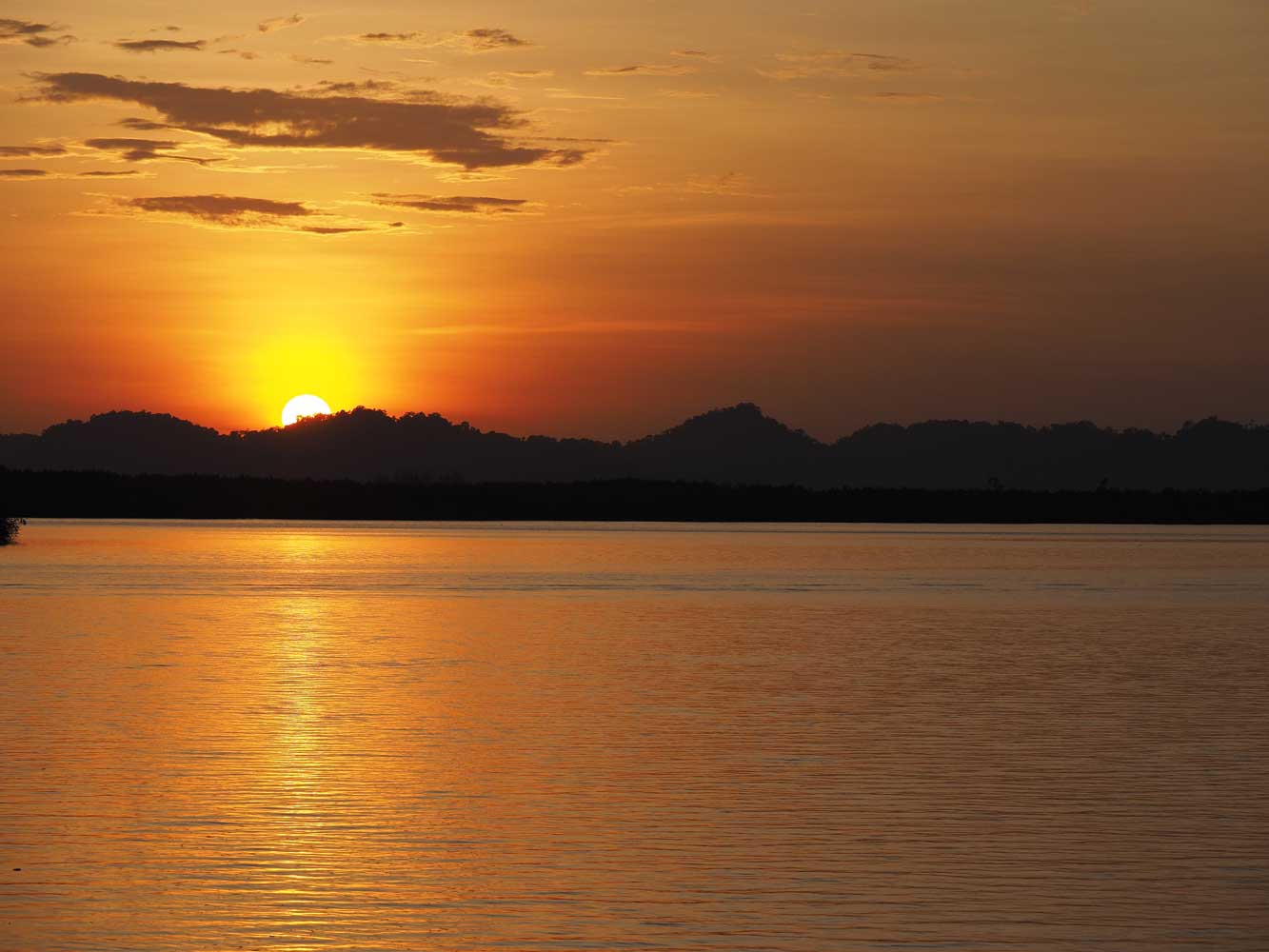
The sun sets over
the Andaman Sea as we get ready to depart.
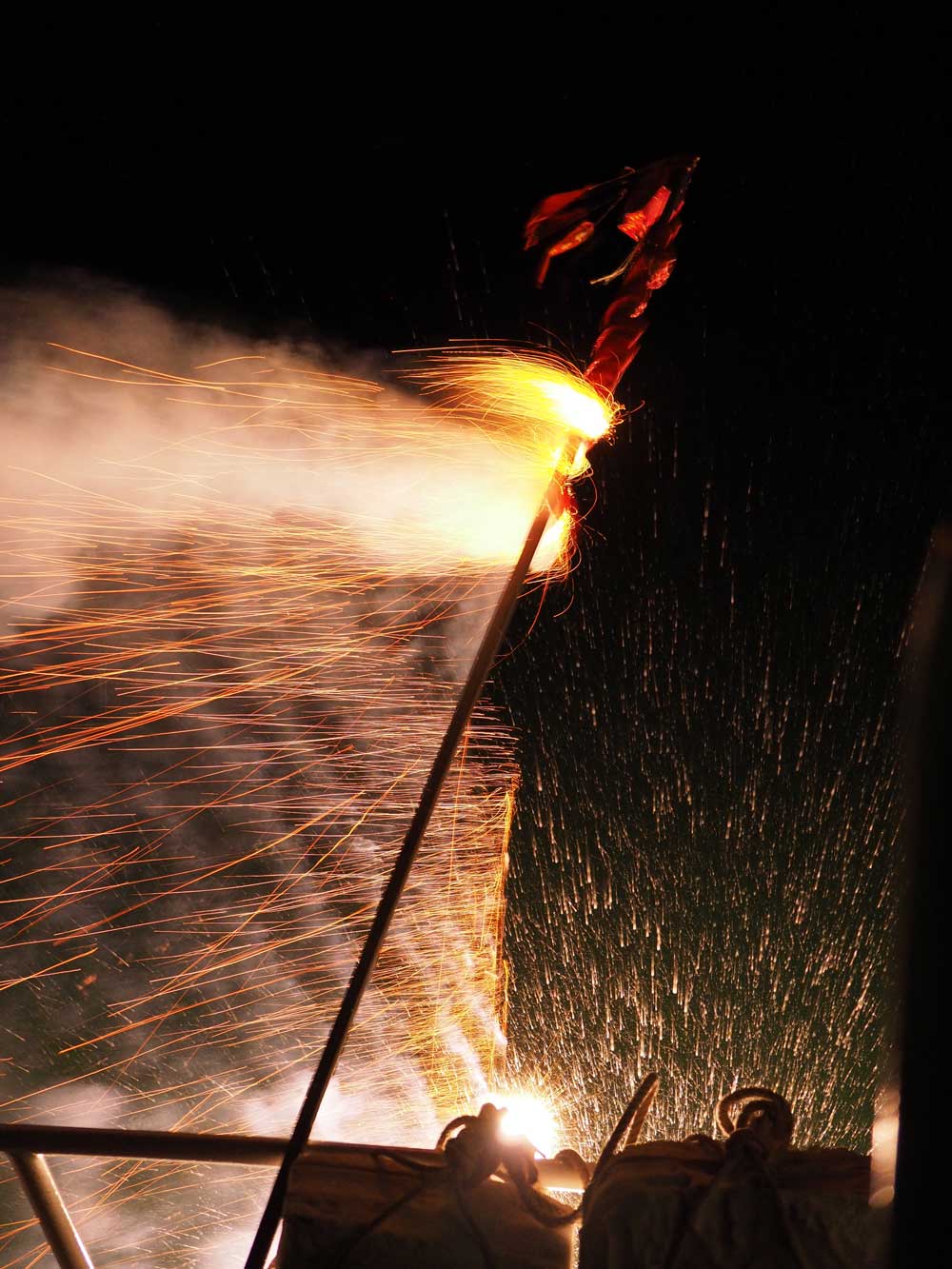
Firecrackers
wrapped around the stick go off in a fury of smoke and noise for good luck!
4 December Andaman Sea
When the sun rose we had already arrived at our
first dive site, Koh Chi, located off the northernmost of the Surin Islands and
only three nautical miles from the Myanmar border farther north. The early
morning dive went down to 23 meters—averaging 16 meters—and stayed 56 minutes.
We saw a lot of life including small critters such as the very well camouflaged
orangutan crab, nudibranches, varicose wart slug, pipefish, and the colorful yet
shy peacock mantis shrimp. Giant clams lay about, and I remembered reading
horror stories as a kid about skin divers getting trapped by clams and drowning.
I may have seen such an incident in the TV series “Sea Hunt” as well, but in
those days we didn’t have the internet to fact-check things. It turns out that
clams close their shells sufficiently slowly that a diver would not be trapped.
Lots of the usual fish swam about including Malabar groupers, oriental
sweetlips, bannerfish, parrotfish, and lionfish. Playful clownfish stuck close
to their home deep in anemone tendrils. And giant moray eels waited patiently in
their holes.
The late morning dive went down at Torinla North, where the
fish again put on a fine show—tiny ones in the hard corals and larger species
out in the open water. We were lucky to find a ghost pipefish near the bottom
and a tiny seahorse, still gripping a piece of vegetation, near the surface. Big
waves had sprung up, making getting back on the boat an extra challenge. Once
aboard, we rode to a protected bay for lunch.
Next we dove at Ao Sutep
off South Surin Island, and found a very pretty translucent orange nudibranch,
Thecacera pacifica, commonly called a ‘Pikachu nudibranch’ due to its
resemblance to the Pokémon character. Pineapple and marbled sea cucumbers crept
imperceptibly across the seafloor, but they are so ugly that us divers pay
little attention to them! A pair of colorful painted spiny lobsters
(Panulirus versicolor) tried to hide under a ledge. The well-named harp
corals do well here along with many kinds of hard corals. We saw bluespotted
stingrays (Neotrygon kuhlii), brown marbled grouper, and one of my
favorites, the immaculately ‘painted’ powder blue surgeonfish or powderblue tang
(Acanthurus leucosternon).
At night we headed into the water at
Coconut Bay near South Surin Island and saw lots lobsters, giant red crabs,
smaller crabs, large and small cuttlefish, sleeping parrotfish in their mucus
cocoon, and a few fish out and about.

The
dawn’s early light glows on the Surin Islands.
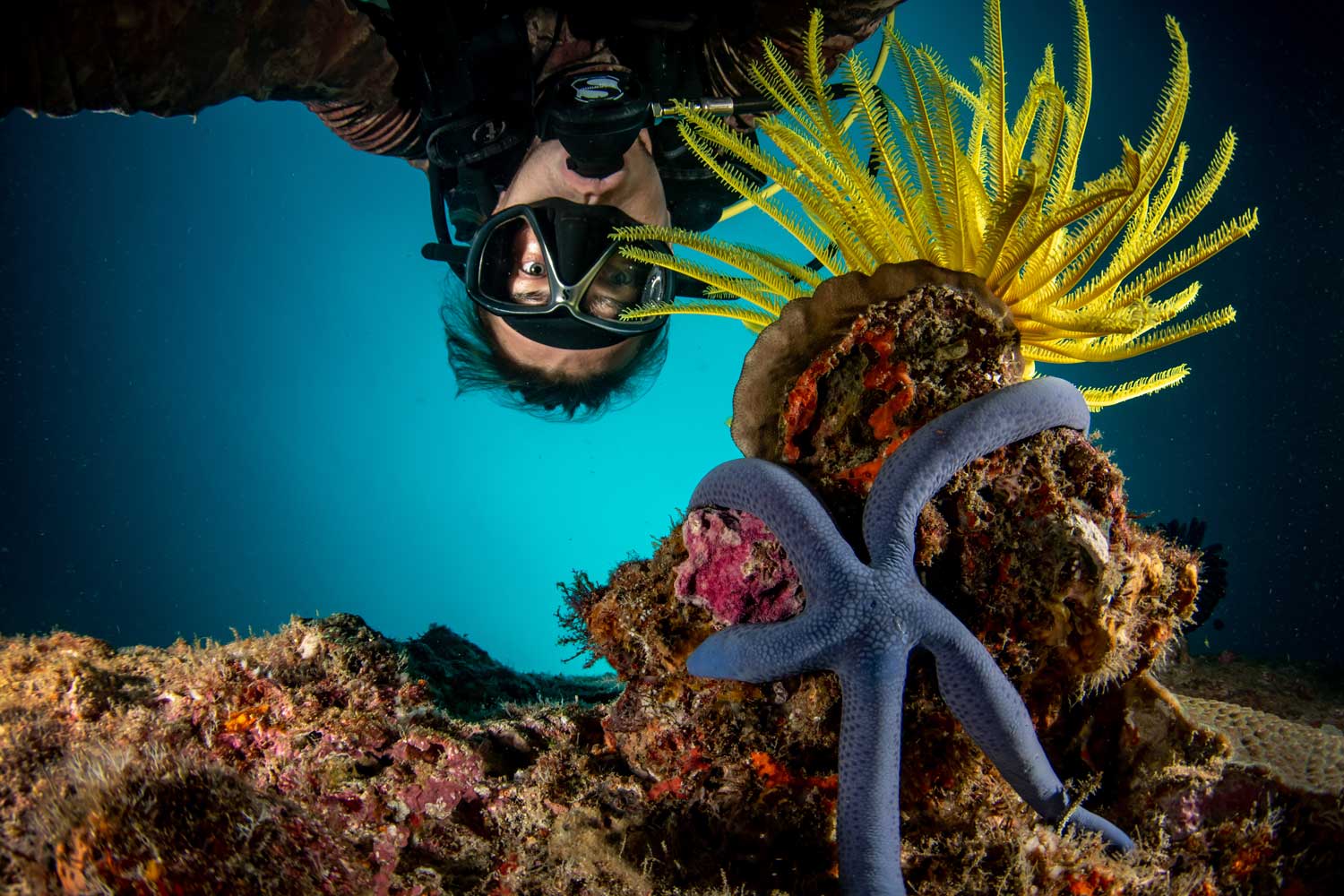
Krys makes a
selfie with a feather star and starfish.

The
crown-of-thorns starfish (Acanthaster planci) has pretty colors despite
its destructiveness and poisonous nature.
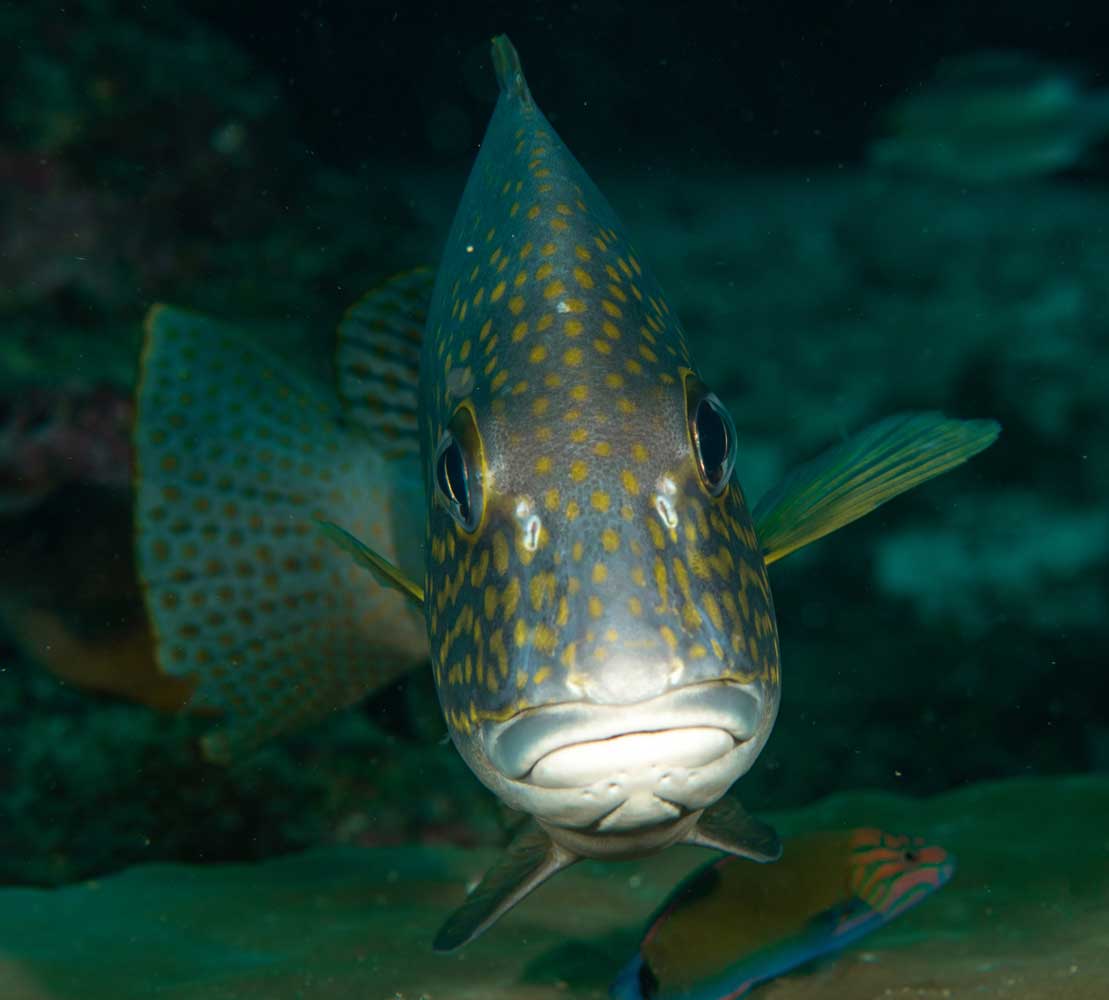
Fish can be
curious! This looks like a painted sweetlips (Diagramma pictum).
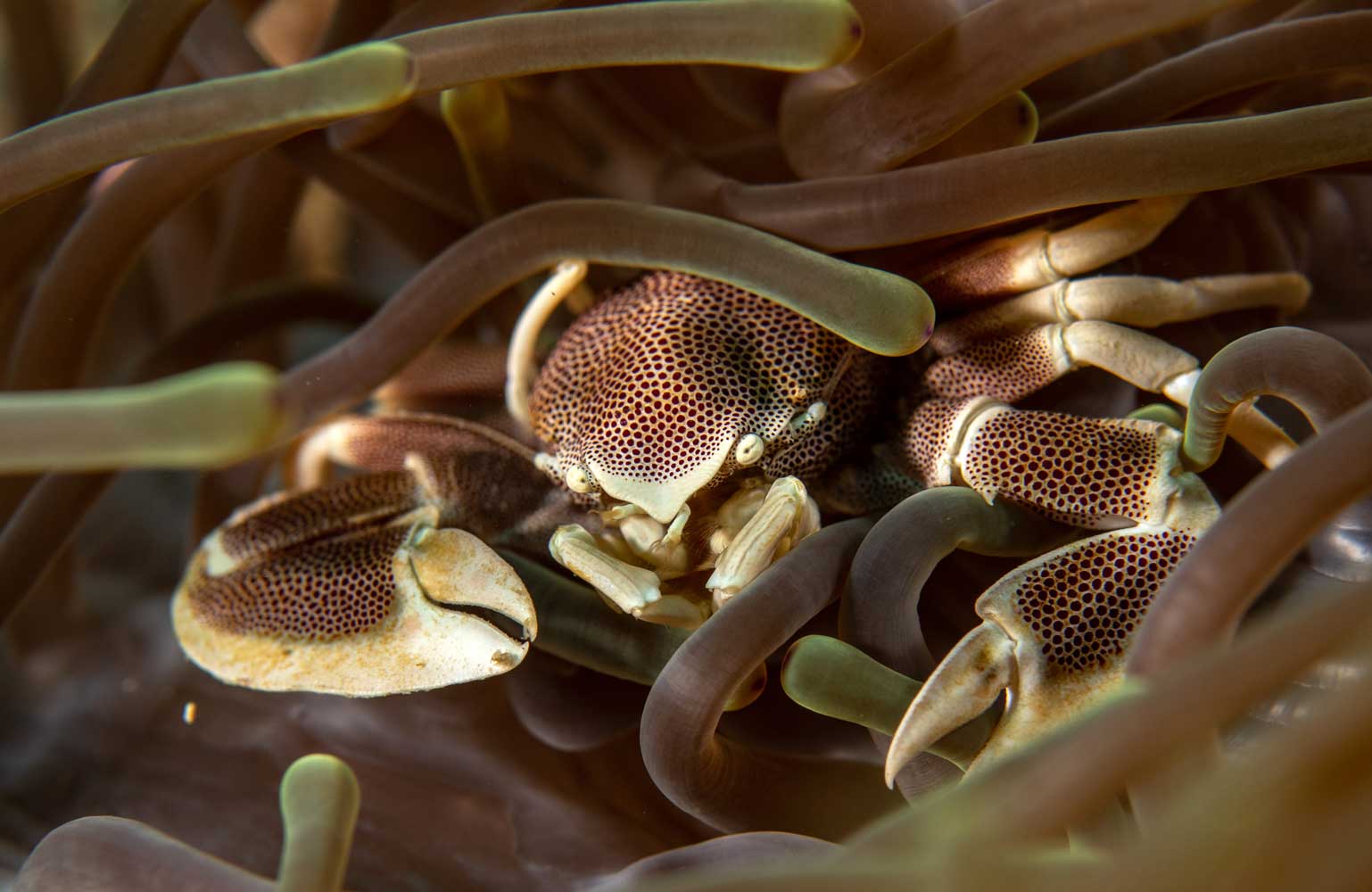
Porcelain
anemone crabs (Neopetrolisthes maculatus) use their disproportionally
large
claws for protection and territorial fights with other crabs rather
than for catching prey.
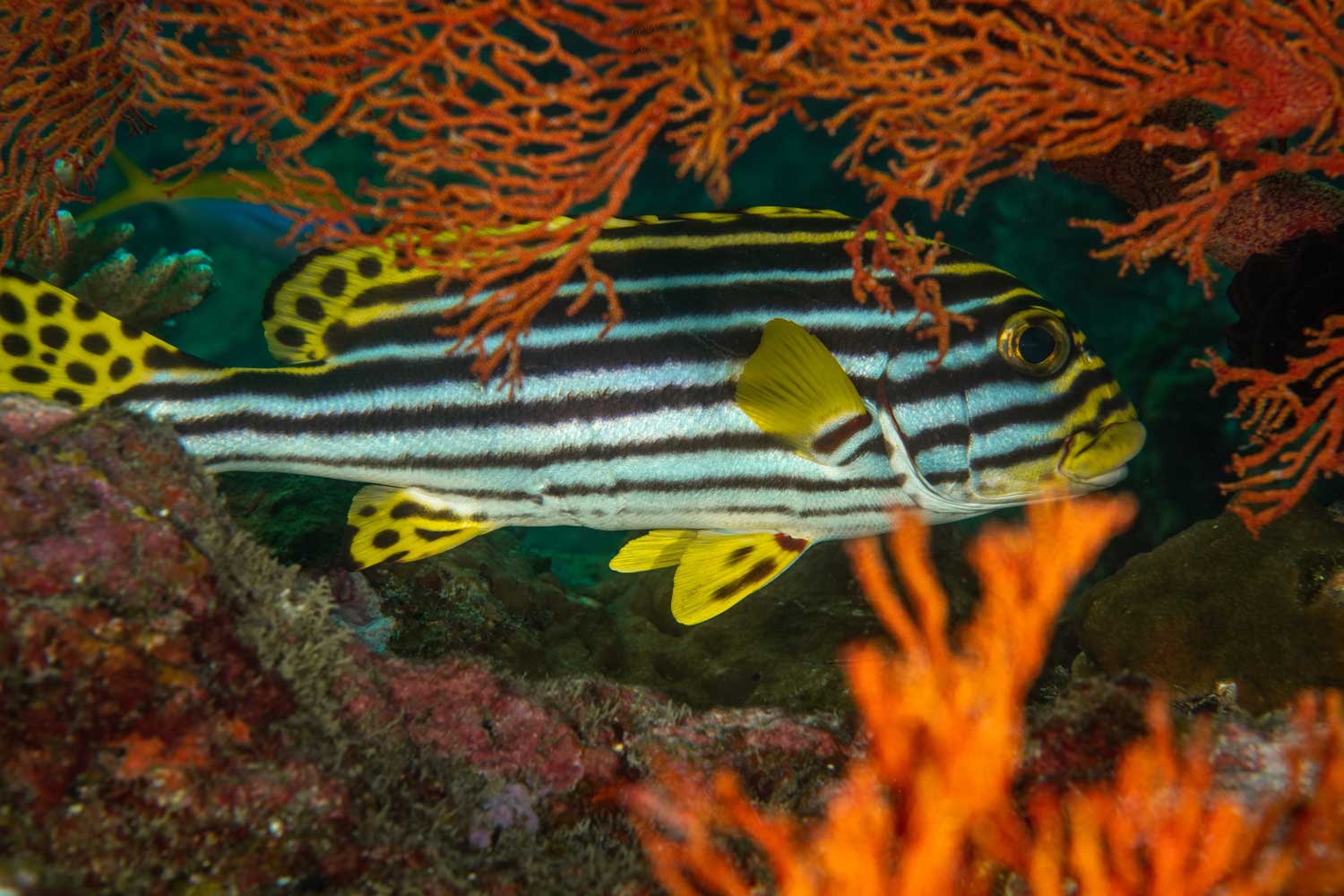
The
Indian Ocean oriental sweetlips (Plectorhinchus vittatus) is a species
of grunt native
to the Indian Ocean and the western Pacific Ocean. We often
saw them in small schools.
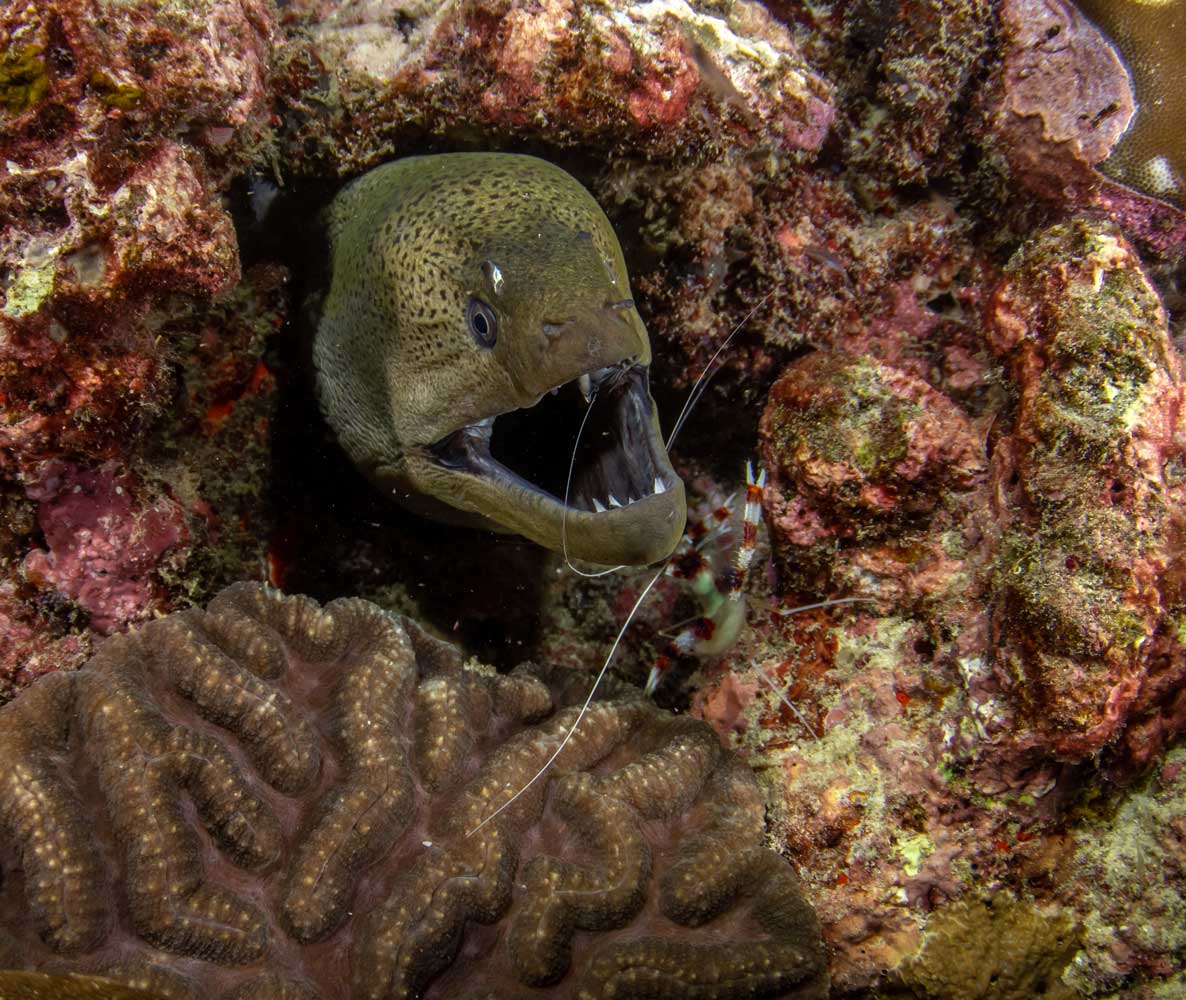
Giant moray eel with a cleaner shrimp on its chin
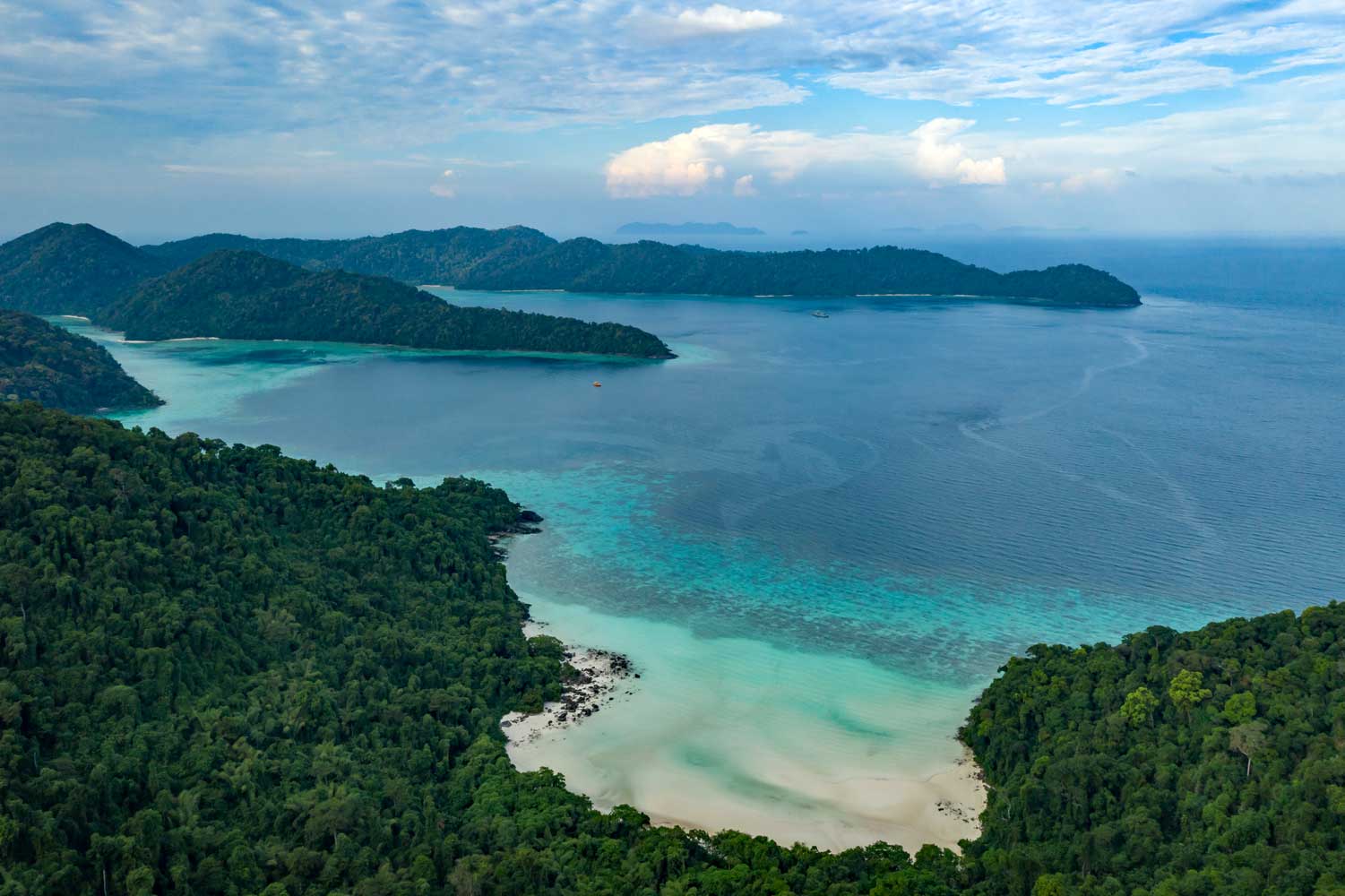
Surin Islands
5 December Andaman Sea
We hung around South Surin Island for a
morning dive at Torinla Original where we found a pair of tough-to-spot seagrass
ghost pipefish that does look very much like
a piece of drifting seagrass. More common creatures included Jenkin’s ray,
Malabar grouper, Napoleonfish, triggerfish, oriental sweetlips, and angelfish.
During breakfast we motored to Richelieu Rock, my favorite dive site of the
region, and on the way we saw dolphins and a manta ray, which got everyone
excited. Under the water, visibility had greatly improved since my visit several
days ago. We went deep to 28.7 meters to take in the great range of life here
including the vibrantly colored soft corals and innumerable numbers of fish. A
reef octopus, hounded by fish, swam by. The ‘gang’ of trevally, napoleon wrasse,
and rainbow runner swept through the water intently focused on finding prey.
In the early afternoon we made another deep dive at Richelieu Rock, finding
a pair of very small and pretty harlequin shrimp (Hymenocera picta)
with a cream-colored body covered in polka-dot-like spots. And we met up with a
pair of cuttlefish near the end of the dive.
The water seemed murkier
for the sunset dive. Great streams of silvery fish circled around, attracting
the attention of trevally and some mackerel. Near dive’s end we found a
cuttlefish couple.
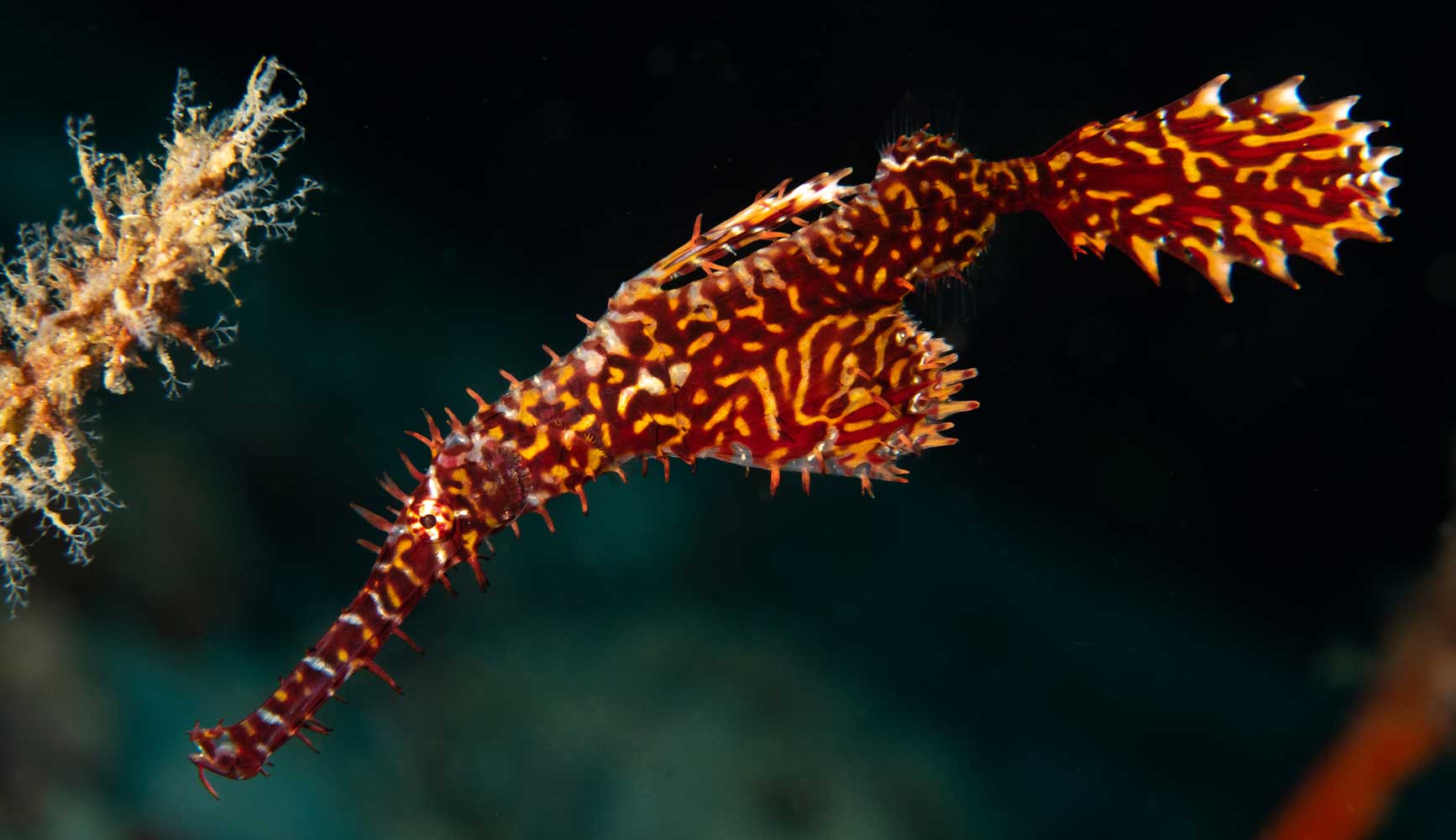
Seagrass
ghost pipefish (Solenostomus cyanopterus) at Torinla Original
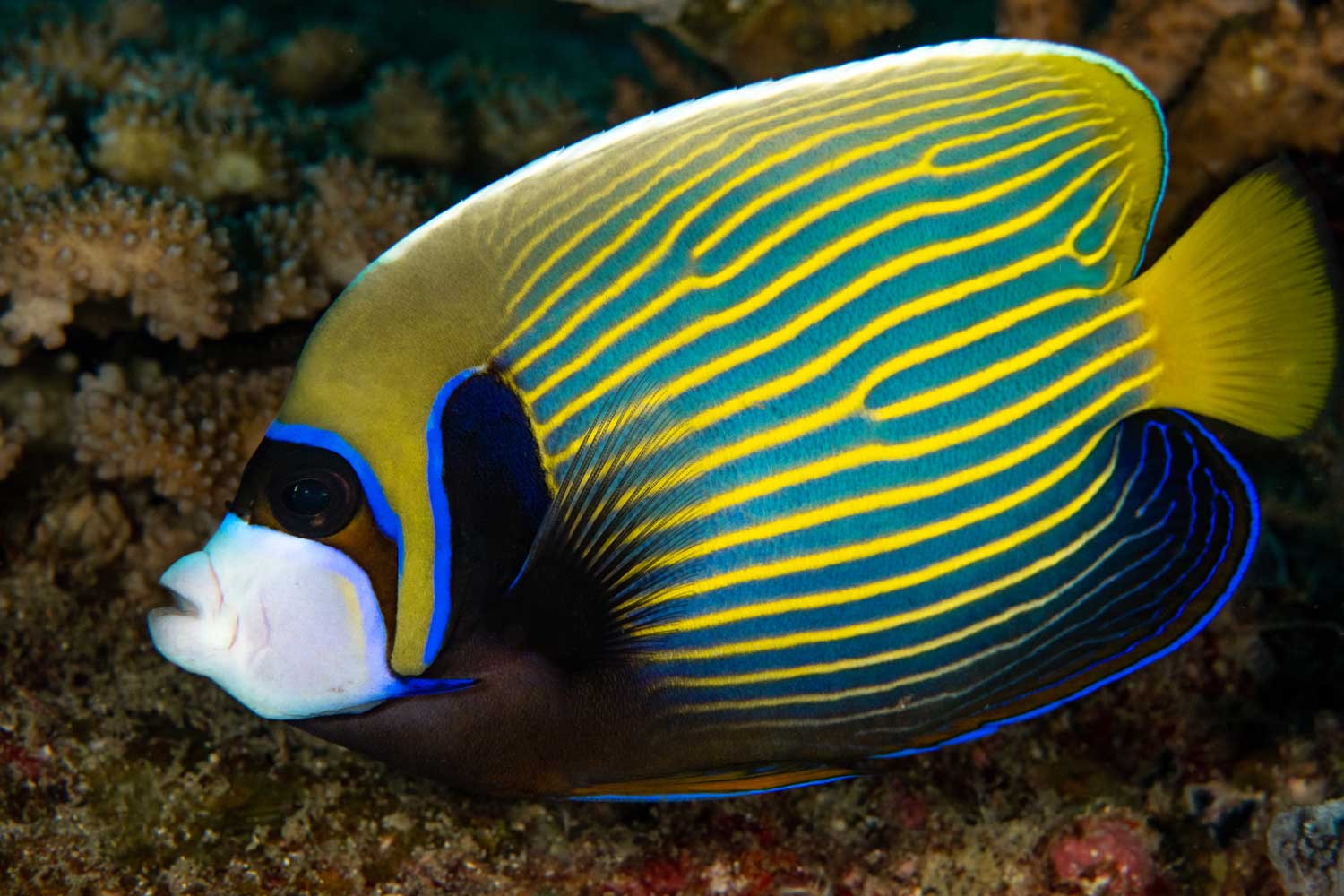
Angelfish add
lots of color to the undersea world! This is an emperor angelfish
(Pomacanthus imperator).
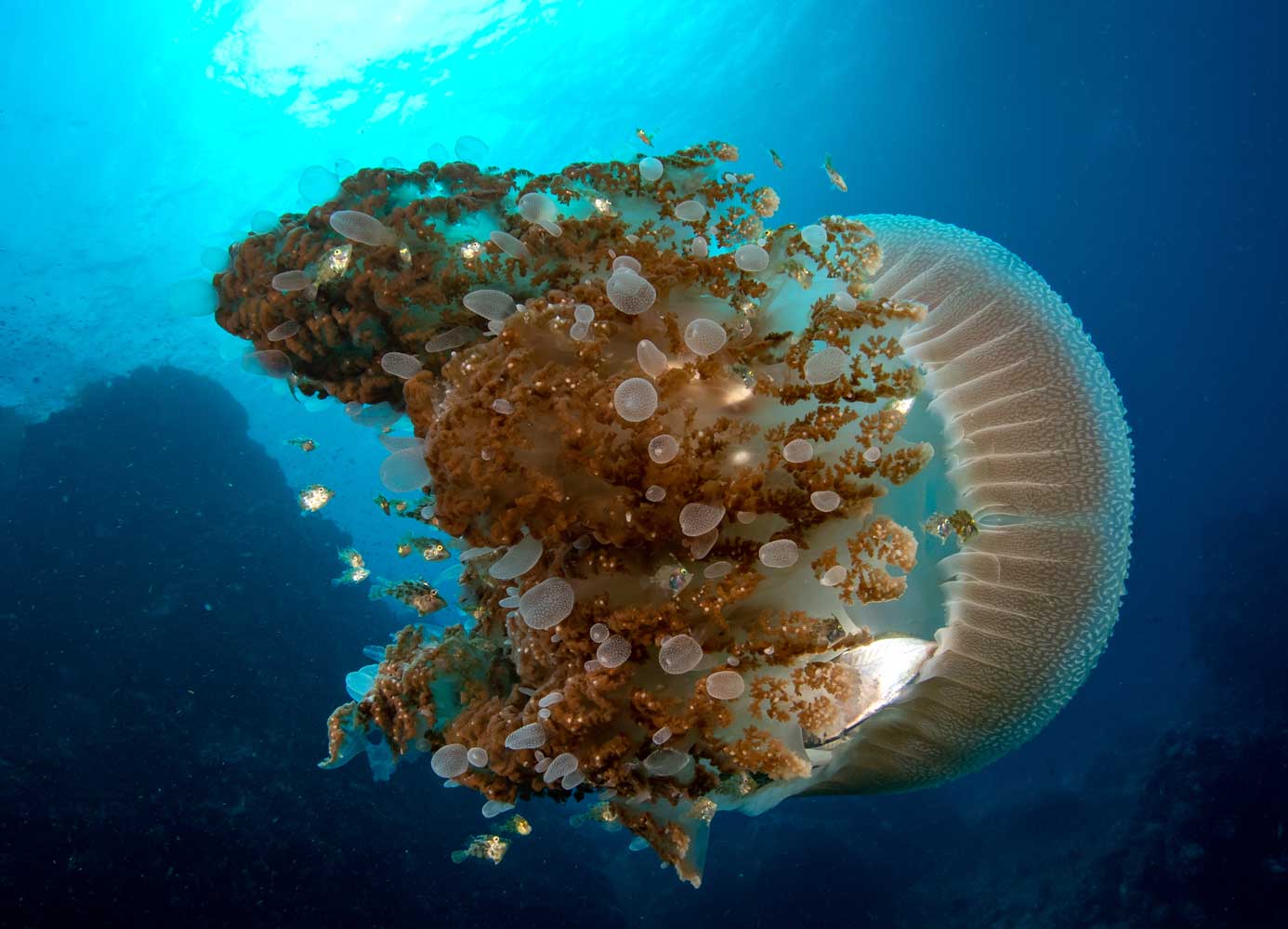
I like watching
jellyfish slowly pulsate on their seemingly endless voyages.
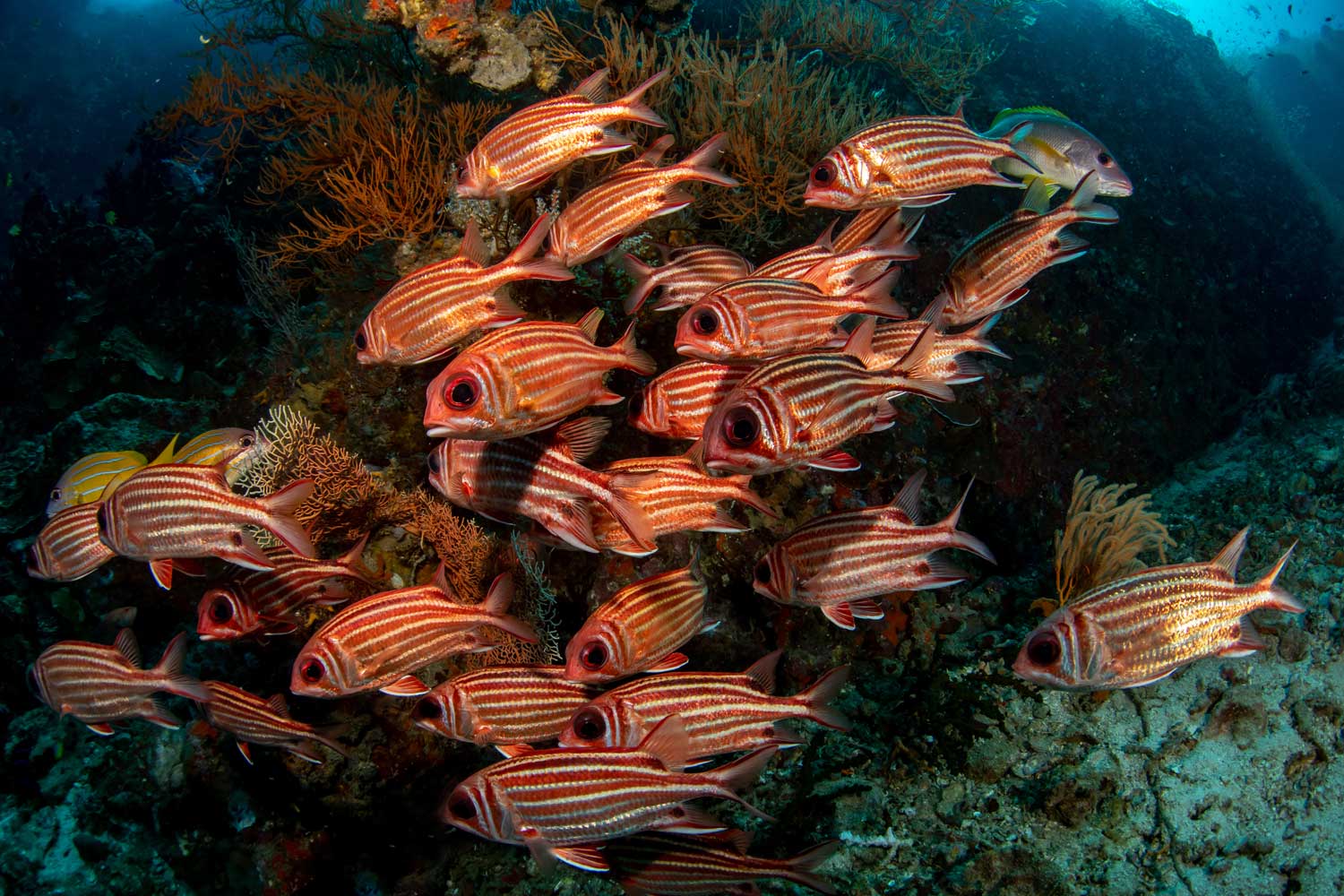
Squirrelfish
come in about 70 species of large-eyed tropical reef fish.
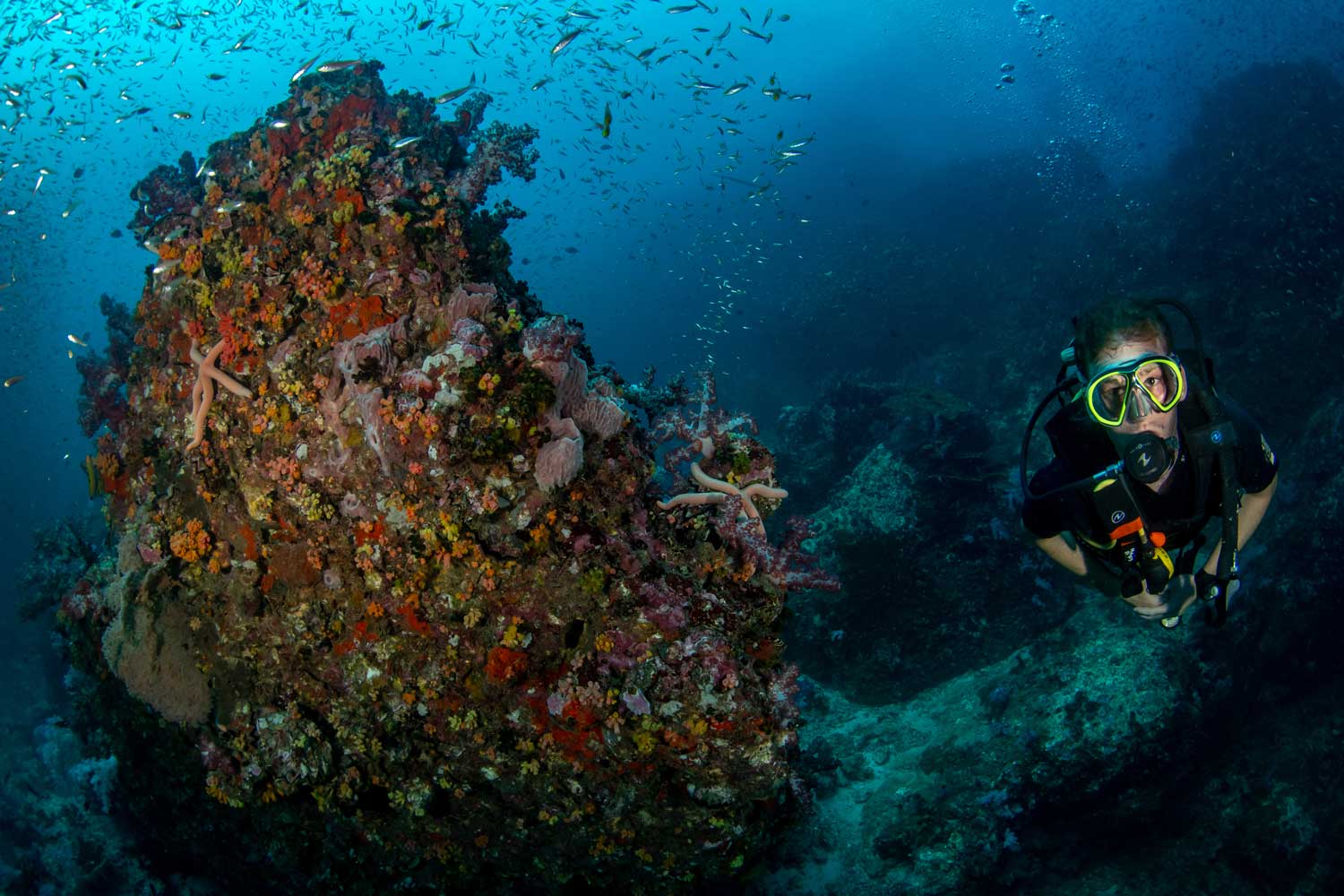
A Christmas
tree for the underwater world?
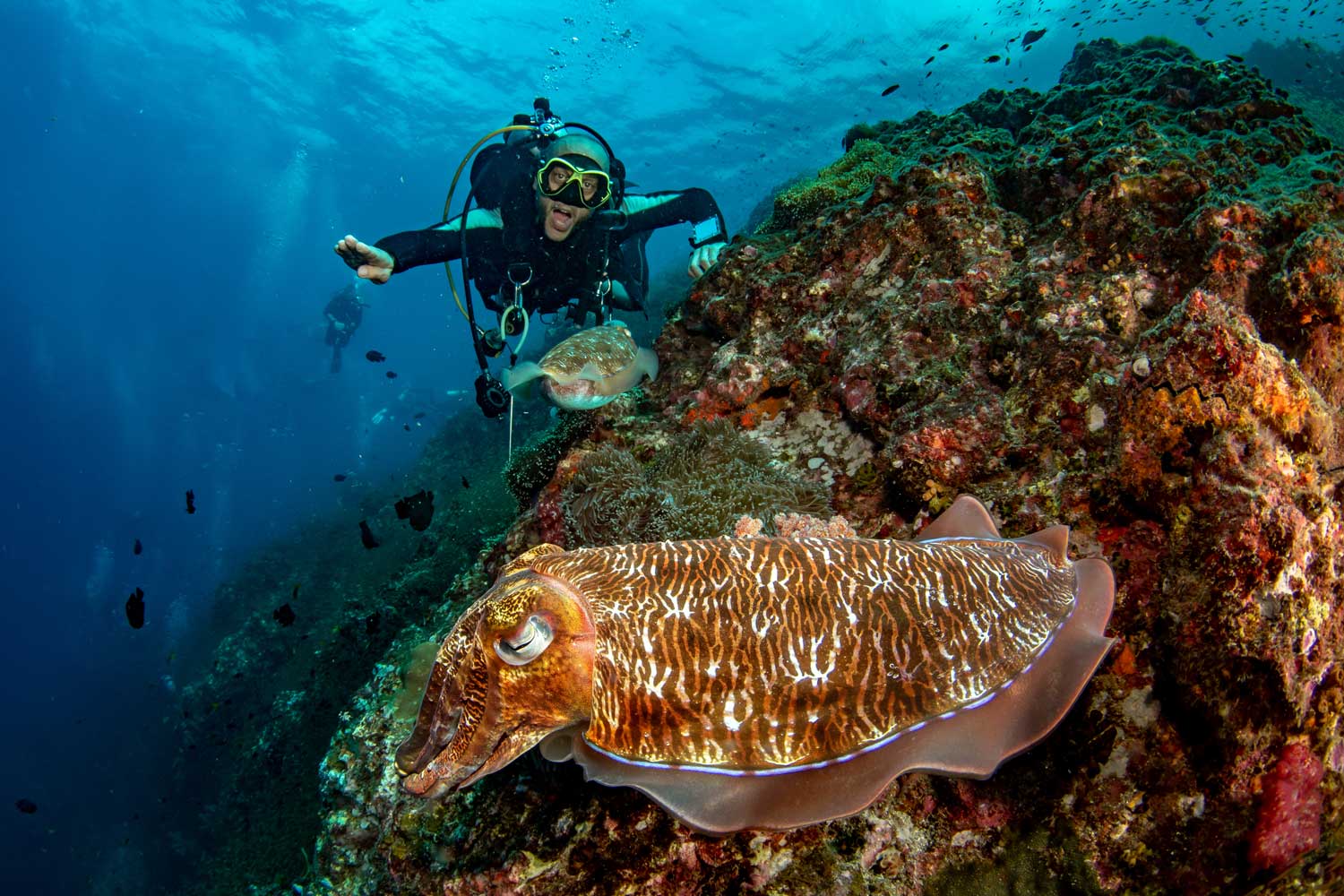
Luca says
hello to one of his cuttlefish friends.
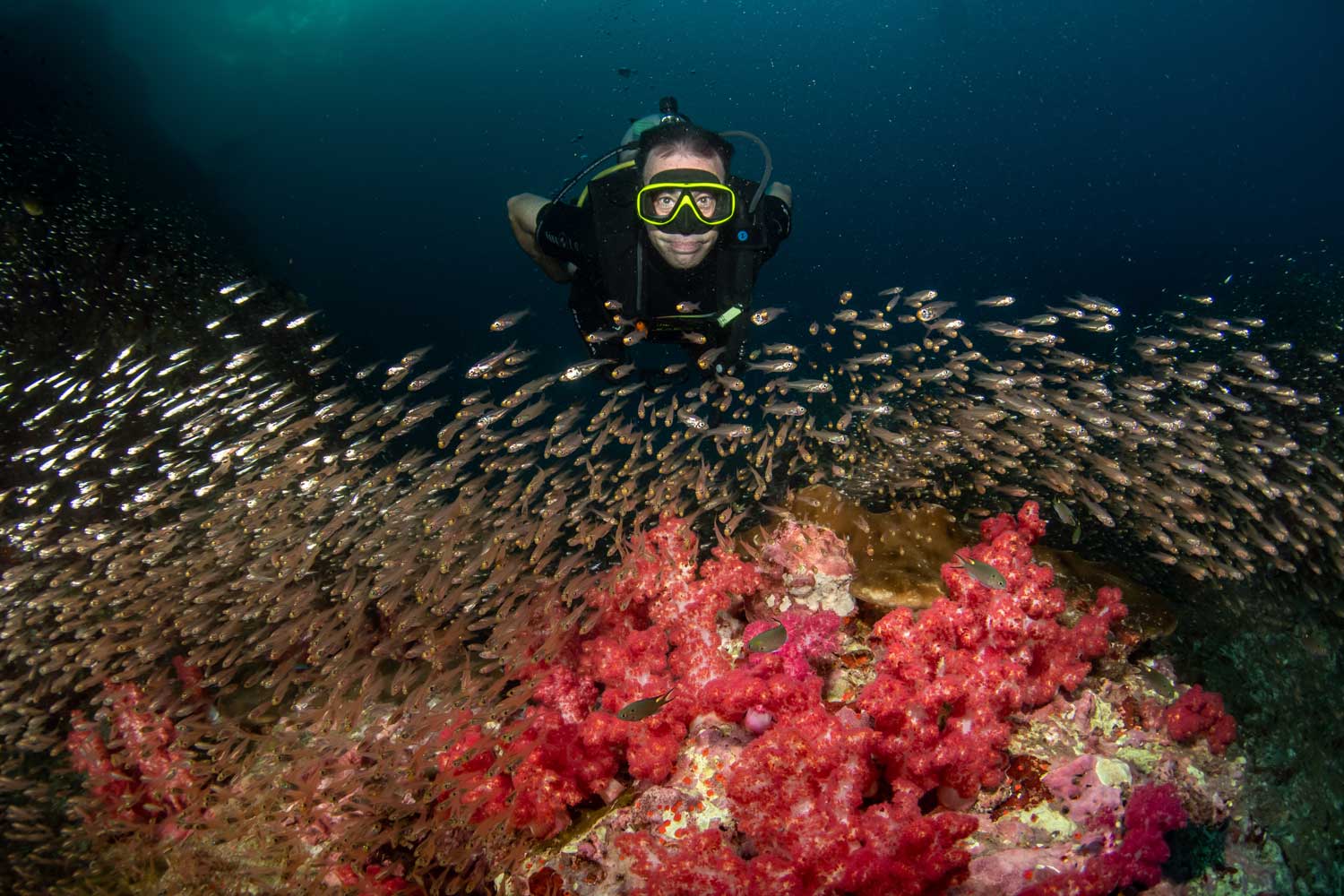
I’m admiring
the colorful soft corals of Richelieu Rock and the shimmering school of glass
fish.
6 December Andaman Sea
Overnight our captain took
us to Koh Tachai, but the current was so strong at our intended dive site the
next morning, that we chose to go down at the more sheltered Tachai Reef. Here
in current, we saw great barracuda and Spanish mackerel, Kuhl’s ray, giant
moray, and in the coral crevices, banded boxer shrimp.
In late morning
we braved the current at the preferred dive site, Koh Tachai Plateau, and saw
massive tunas as well as trevally, gray and pickhandle barracudas, and lots of
reef fish. We hung onto the flat-topped underwater plateau, which Luca likens to
a panatone (the Italian Christmas bread), in strong current before
surfacing.
While we munched on lunch, the boat headed for Koh Bon, the
limestone island, where we had our most exciting dive of the trip thanks to a
manta ray, which joined us for the entire time. It seemed curious about us
divers and repeated circled back. Occasionally it would abruptly turn upward to
near the surface before resuming its looping path. They are filter feeders and
eat large quantities of zooplankton, which they gather with their open mouths as
they swim, aided by a pair of horn-shaped cephalic fins located on either side
of their mouths. Also, they must swim continuously to keep oxygenated water
passing over their gills. More about the life of this great animal is at
https://en.wikipedia.org/wiki/Manta_ray. A pair of remora had attached
themselves above the mouth, appearing a bit like headlights. A cobia fish tagged
along behind.
On the sunset dive I found a rare Maldives sponge snail
(Coriocella hibyae) that doesn’t look like a sponge at all. The dark
mantle covers several protuberances that could easily be mistaken for a sponge
or sea slug, but when I got close to the creature I could see that it had a
snail’s foot and moved along at a snail’s pace. They’re native to the Maldives,
yet also appear at just a couple places here in Thailand. Near dive’s end, we
swam with a friendly school of batfish. A thunderstorm lit up the sky after the
dive.
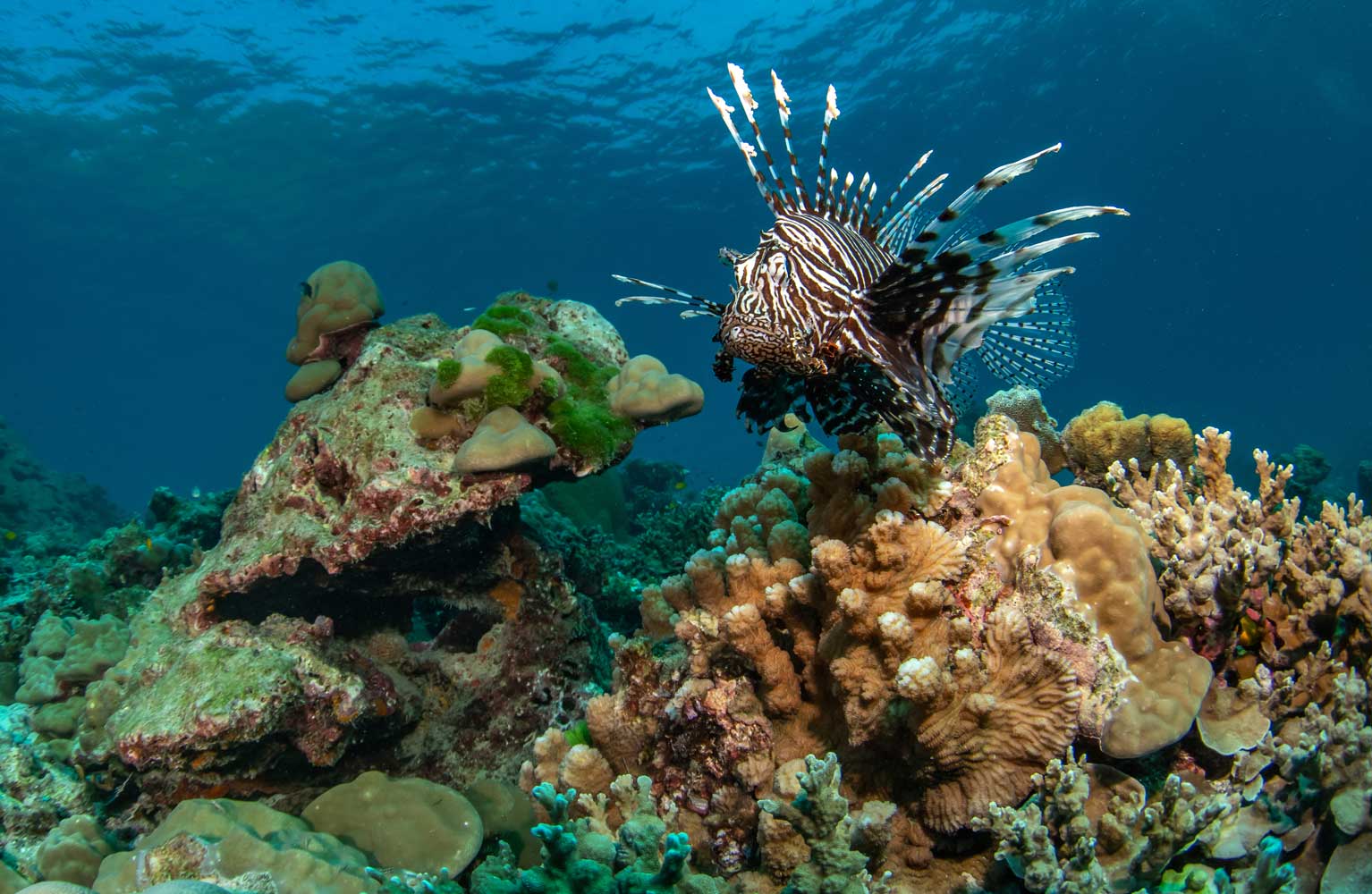
Lionfish don't
need camouflage because their venomous spines deter just about any predator.
(Tachai Reef)

Barracuda are
built for speed! (Koh Tachai Plateau)
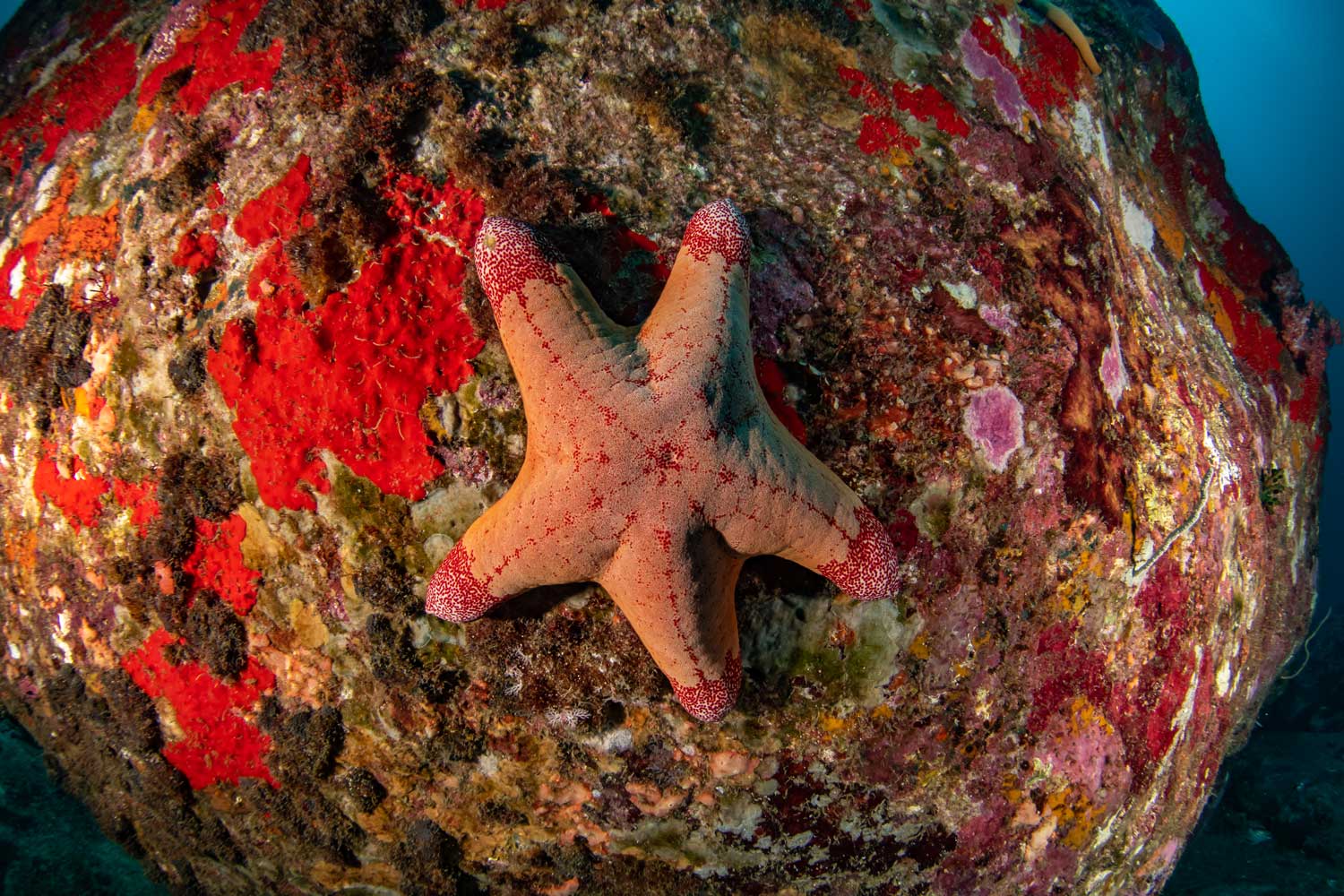
A starfish
takes center place.
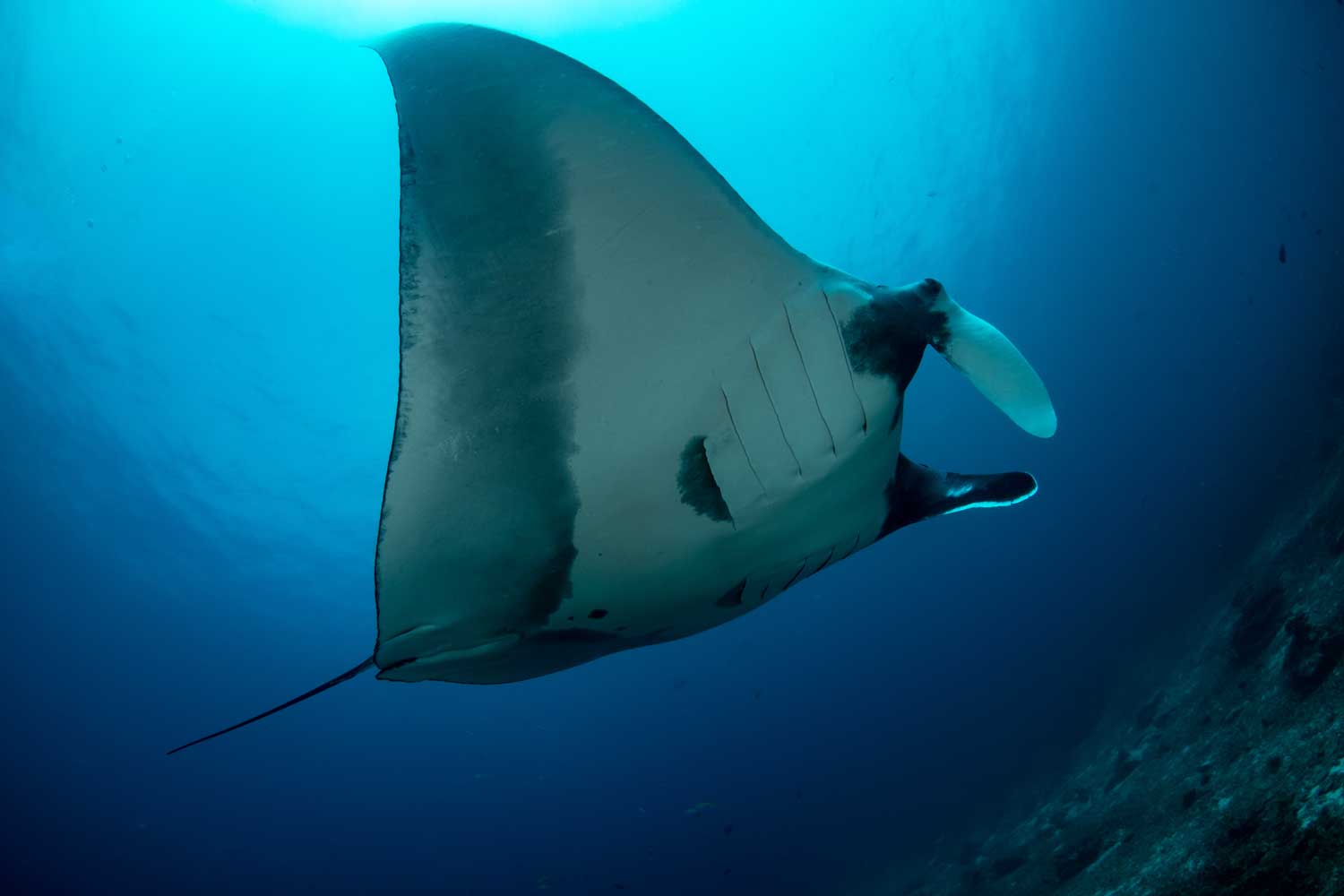
This friendly
manta ray swam among us for the entire dive!

The manta
ray seems to like divers.

A pair of
remora go along for the ride.
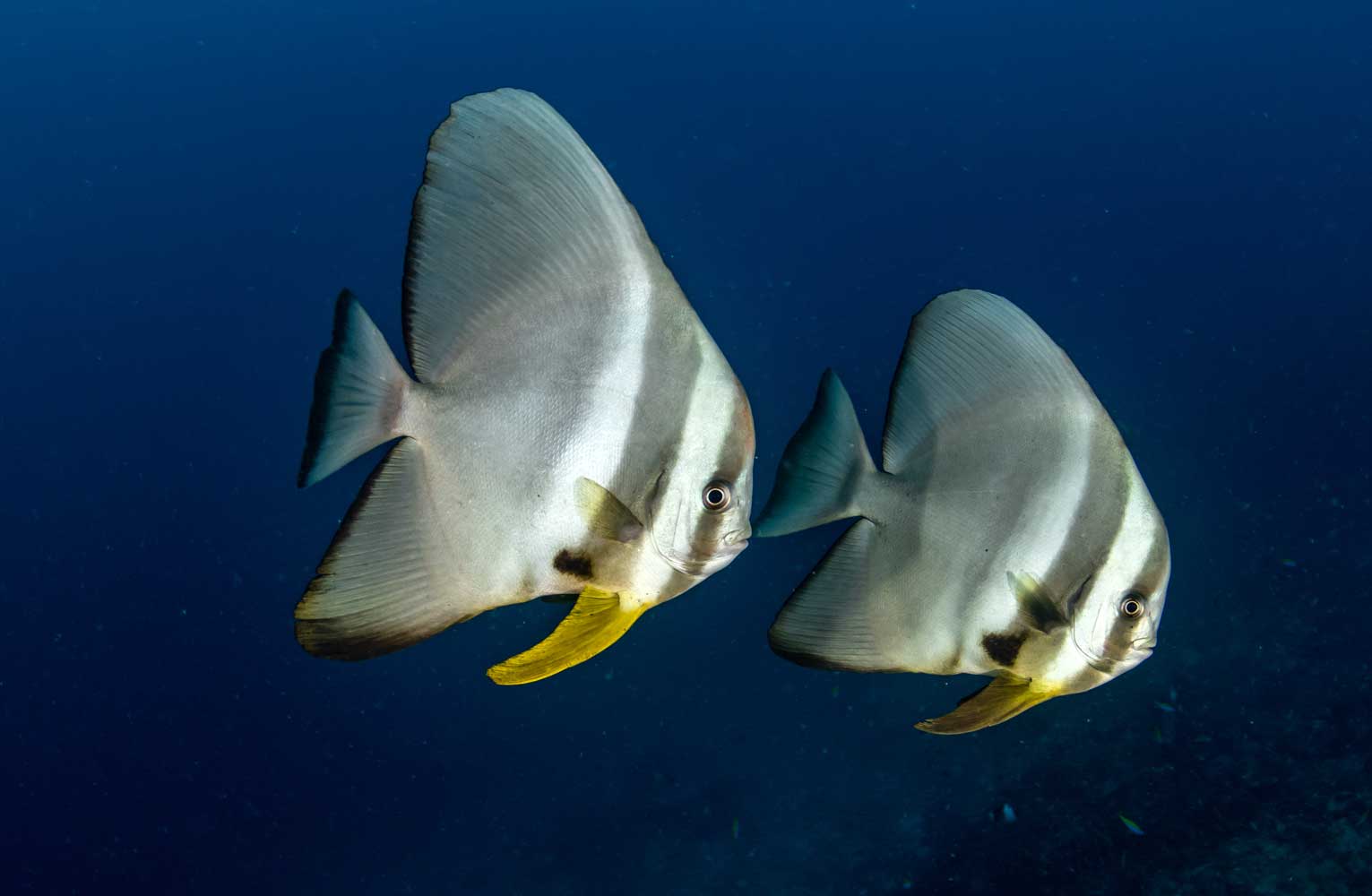
Longfin
batfish (Platax teira) are very mild mannered. (Koh Bon).

Koh Bon
On to scuba diving in Thailand’s
Andaman Sea Part 4
Back to Beginning of Southeast Asia Backpacking Nov.-Dec. 2018














































